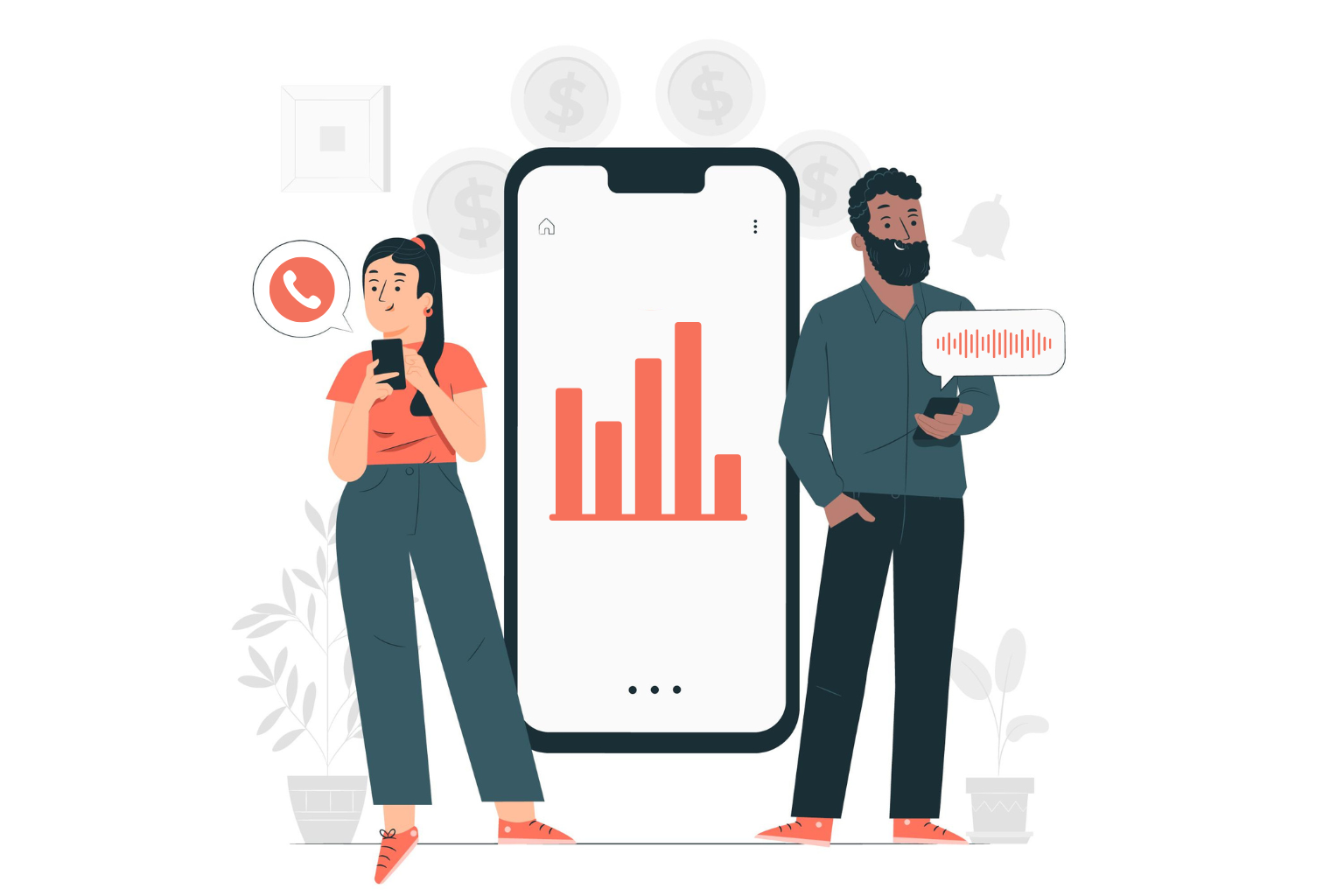Effective communication is pivotal in building strong customer relationships and driving success. One essential aspect of communication is call monitoring, which allows businesses to analyze and evaluate phone conversations.
As technology advances at an unprecedented pace, the future of call monitoring holds immense potential to revolutionize how organizations interact with their customers.
Call monitoring enables businesses to gain valuable insights into their communication strategies, identify areas for improvement, and ensure compliance with industry regulations. Traditionally, call monitoring involved manually reviewing recorded calls, which was time-consuming and labour-intensive.
However, call monitoring is transforming with the advent of advanced technologies and the rise of artificial intelligence (AI). The future of call monitoring promises to streamline operations, enhance customer experiences, and optimize business outcomes.

This blog post delves into the exciting developments and potential implications of the future of call monitoring.
Current State of Call Monitoring

Before exploring future possibilities, it is essential to understand the current state of call monitoring. Various tools and software are available to facilitate call monitoring processes. These solutions include call recording, agent evaluation, sentiment analysis, and performance metrics tracking. However, each tool has its limitations and challenges.
Privacy and data security concerns are among the significant challenges current call monitoring systems face. As call recordings contain sensitive customer information, proper data protection is crucial. Scalability and flexibility issues can arise when businesses need to expand their call monitoring capabilities or integrate with other systems.
Furthermore, the accuracy and reliability of call monitoring metrics are of utmost importance. Organizations must ensure that the data collected and analyzed accurately reflect the quality of customer interactions. Inaccurate metrics can lead to misguided decisions and hinder the effectiveness of call-monitoring initiatives.
Emerging Future Trends in Call Monitoring

The future of call monitoring is set to witness further advancements and innovations driven by emerging technologies and evolving customer expectations. As businesses strive to stay competitive and meet changing demands, several future trends and predictions can be anticipated in call monitoring.
Natural language processing (NLP), sentiment analysis, and voice recognition are expected to become more refined and accurate, enabling deeper insights into customer interactions. These technologies will continue to enhance AI-powered speech analytics, allowing organizations to extract more nuanced information from phone conversations and provide personalized customer experiences.
Real-time transcription and translation are also poised to play a significant role in the future of call monitoring. The ability to transcribe and translate calls in real time will become invaluable. Real-time transcription can aid in the immediate analysis of customer conversations, while real-time translation can facilitate seamless communication between agents and customers who speak different languages.
Another emerging trend is the integration of call monitoring with other communication channels, such as chatbots, social media, and messaging apps. With the rise of omnichannel customer service, businesses need to monitor and analyze interactions across multiple platforms.
By integrating call monitoring with these communication channels, organizations can gain a holistic view of customer interactions, identify patterns, and provide consistent and personalized support across different touchpoints.
Predictions for the Future of Call Monitoring

Predictive analytics will continue to shape the future of call monitoring. Organizations can anticipate customer needs and proactively address potential issues by leveraging historical call data and customer behaviour patterns. Predictive analytics can help businesses identify early warning signs of customer dissatisfaction, predict customer churn, and offer targeted solutions to retain valuable customers.
Virtual assistants can assist call centre agents by providing real-time insights and recommendations during customer interactions. They can analyze customer data, suggest appropriate next steps, and even automate certain tasks, leading to increased efficiency and improved agent performance.
With advancements in AI and ML, supervisors will have access to more accurate and detailed real-time insights into customer interactions. It will enable them to provide immediate feedback, guidance, and coaching to agents, resulting in improved customer satisfaction and agent performance.
As call monitoring evolves, data privacy and security will continue to be of paramount importance. Organizations must implement robust security measures to protect customer data and ensure compliance with data protection regulations. Additionally, transparent and ethical data-handling practices will be critical to maintaining customer trust and confidence.
Conclusion
Embracing the future of call monitoring is essential for businesses to stay competitive and meet customer expectations in today's rapidly evolving business landscape.
By leveraging advancements in AI, ML, and cloud-based solutions, organisations can unlock the full potential of call monitoring to enhance customer experiences, drive operational efficiency, and ensure compliance.
Embracing these technological advancements and addressing ethical considerations will position businesses for success in an increasingly customer-centric world. You can leverage Callyzer, a call monitoring software that monitors your calls accurately and provides advanced features such as an Insightful dashboard, employee management, detailed team reports, call recording, lead management, reporting and more.

